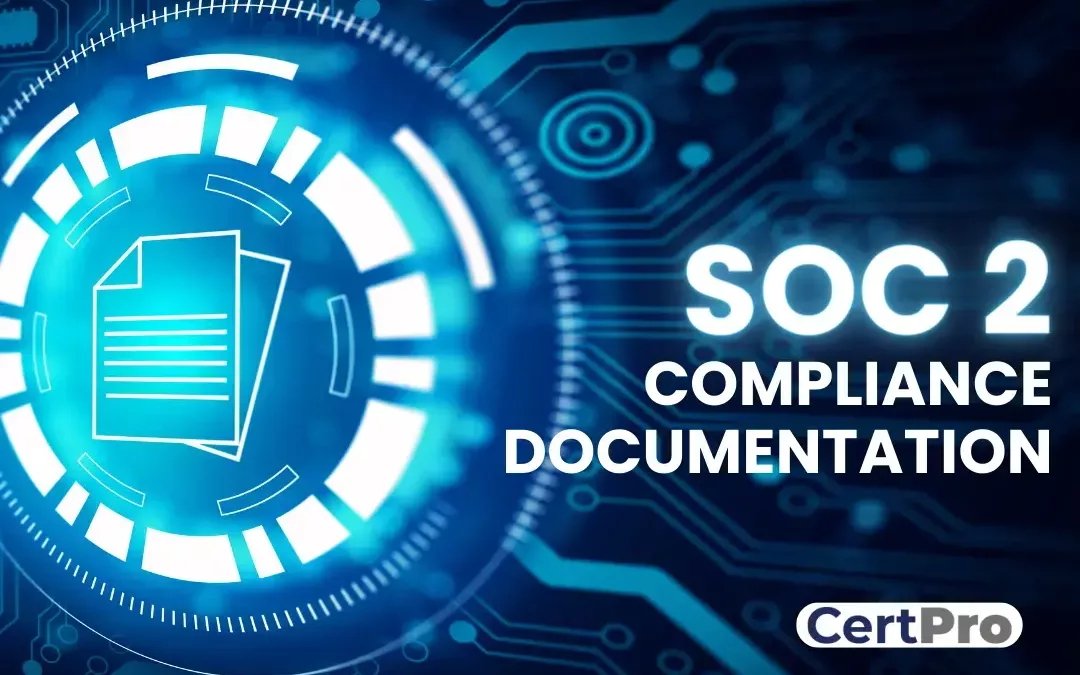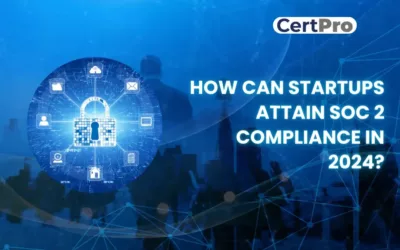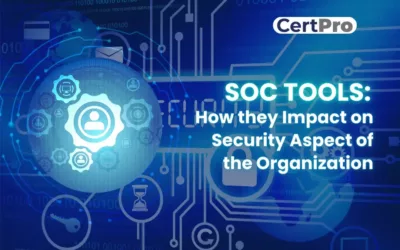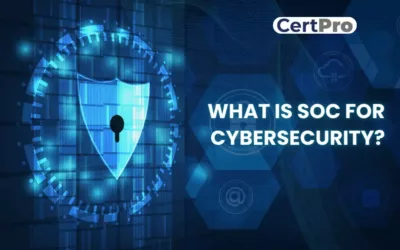Ensuring the security and privacy of sensitive information is crucial for businesses in an era where technology and data rule. Customers, clients, and partners expect organizations to handle their data with the utmost care and protect it from threats and breaches. To meet these expectations, many businesses opt for SOC 2 (Service Organization Control 2) compliance, a recognized framework that sets standards for managing and securing customer data within service organizations. It provides a set of standards and criteria that organizations must meet to demonstrate their commitment to protecting data and ensuring the trust of their clients.
SOC 2 compliance documentation is essential to proving a company’s dedication to data protection. It offers proof that the essential precautions and controls are in place to secure sensitive data. This article will delve into the intricacies of SOC 2 compliance documentation, highlighting its significance, key components, and best practices to ensure security and build trust with customers.
WHAT IS SOC 2 COMPLIANCE?
The American Institute of CPAs (AICPA) created the SOC 2 compliance standard, which outlines how businesses should manage client data based on the Trust Services Criteria (TSC) of Security, Availability, Confidentiality, Processing Integrity, and Privacy.
In other words, SOC 2 compliance is a process that evaluates whether your business properly and safely maintains the data of its clients on the cloud. SOC reports are used to demonstrate how strong your data protection and cloud security procedures are. SOC 2 compliance is a widely recognized compliance standard but is not a regulatory requirement.
IMPORTANCE OF SOC 2 COMPLIANCE DOCUMENTATION
SOC 2 compliance documentation refers to the set of documents and evidence that demonstrate a service organization’s adherence to the Trust Services Criteria defined by the American Institute of CPAs (AICPA). These criteria assess the organization’s internal controls related to security, availability, processing integrity, confidentiality, and privacy. SOC 2 compliance is crucial for service providers, as it assures their clients that appropriate security measures are in place to protect their data and sensitive information. It builds trust and confidence with clients, affirming that the service provider has implemented robust security measures to safeguard sensitive information.
The key points highlighting its importance are:
- Demonstrates Compliance: It serves as tangible evidence that an organization has implemented the necessary controls and safeguards to protect customer data. It demonstrates compliance with the established criteria and provides transparency to auditors and stakeholders.
- Facilitates Audits: Compliance documentation simplifies the audit process by providing auditors with clear and organized information about an organization’s security controls, policies, and procedures.
- Improves Risk Management: Documentation plays a vital role in identifying, assessing, and mitigating risks. It helps organizations understand their unique vulnerabilities, document risk assessment processes, and implement controls to mitigate identified risks.
- Facilitates Regulatory Compliance: SOC 2 compliance documentation helps organizations meet legal and regulatory requirements related to data security and privacy. It aligns with industry-specific regulations, such as HIPAA, GDPR, and PCI DSS, facilitating compliance efforts and reducing the risk of legal consequences.
- Demonstrates Organizational Accountability: By maintaining comprehensive SOC 2 compliance documentation, organizations showcase their commitment to accountability and responsibility. It demonstrates that they take data protection seriously and have implemented the necessary measures to safeguard customer information.
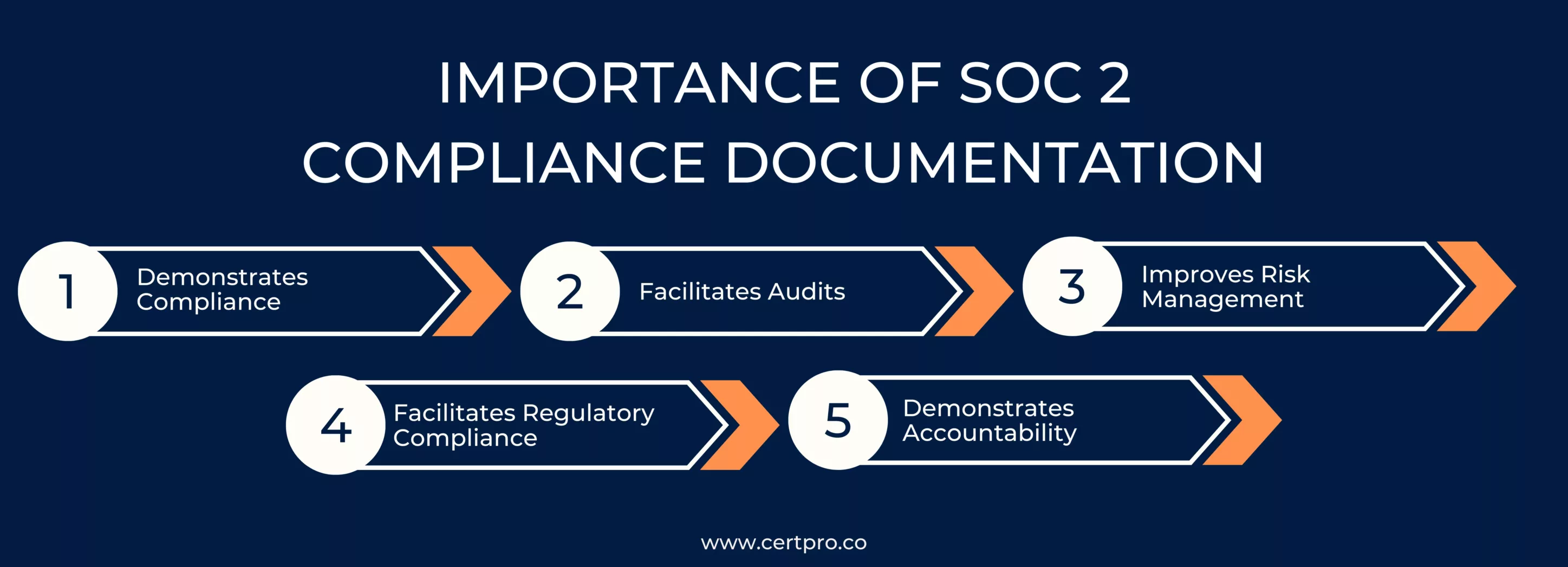
SOC 2 POLICIES AND PROCEDURES
SOC 2 compliance requires the establishment and implementation of robust policies and procedures that align with the five trust principles: Security, Availability, Processing Integrity, Confidentiality, and Privacy.
Some keys to SOC 2 policies and procedures that organizations should consider are:
1. Security Policy: This policy outlines the organization’s commitment to ensuring the security of customer data. It establishes overarching security objectives, defines roles and responsibilities, and provides guidelines for implementing security controls.
2. Data Backup and Recovery Policy: This policy addresses the organization’s approach to backing up critical data and ensuring its recoverability in the event of data loss, system failures, or disasters.
3. Data Classification and Handling Policy: This policy defines procedures for classifying and handling data based on its sensitivity. It outlines how data should be categorized, labeled, stored, transmitted, and disposed of in accordance with applicable regulatory requirements and internal security standards.
4. Change Management Policy: This policy establishes procedures for managing changes to systems, applications, and infrastructure. It includes guidelines for documenting and reviewing proposed changes and obtaining proper approvals to ensure that changes do not introduce security vulnerabilities or disrupt operations.
5. Physical Security Policy: This policy addresses physical security measures to protect sensitive information and critical infrastructure. It outlines procedures for securing physical access to data centers, server rooms, and other sensitive areas.
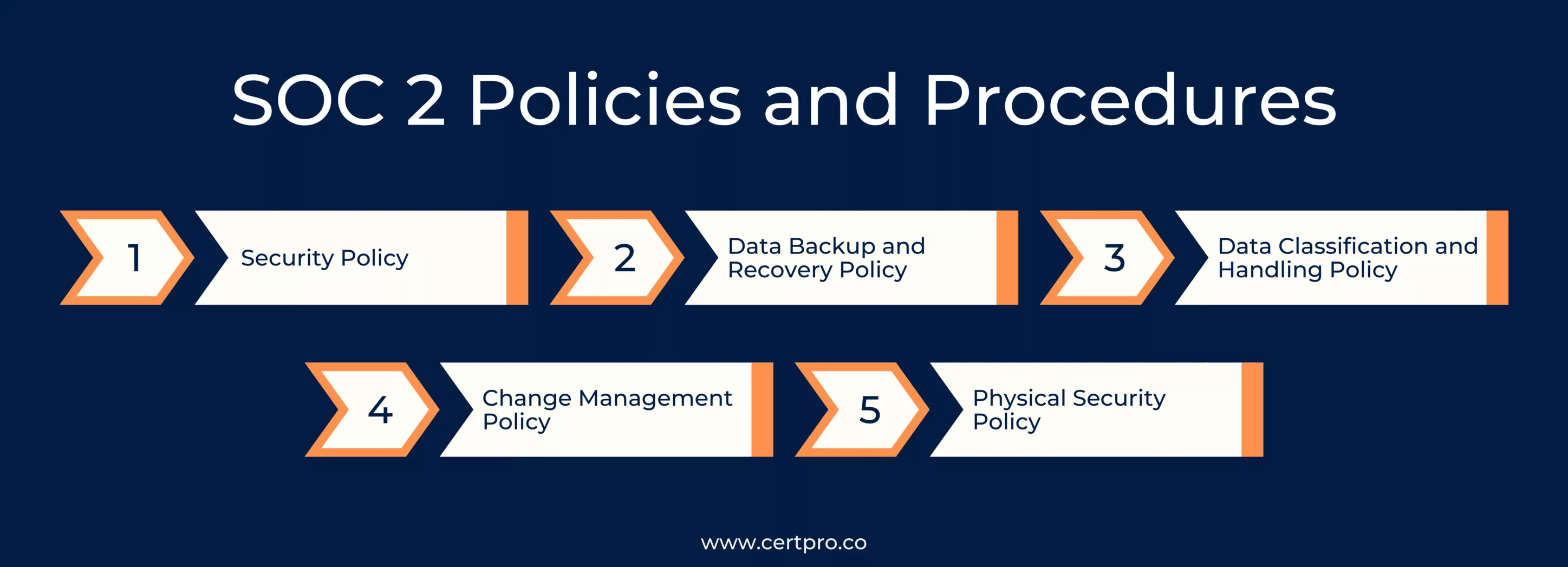
WHAT DOES THE SOC 2 DOCUMENT INCLUDE?
SOC 2 compliance documentation encompasses various components that provide evidence of an organization’s adherence to the defined criteria.
Some key documents typically included in SOC 2 documentation are:
1. Security Policies and Procedures: These documents outline the organization’s overarching security objectives, procedures, and controls to protect customer data. They cover areas such as access controls, network security, incident response, employee security awareness, and physical security measures.
2. Risk Assessment Documentation: This includes documentation related to the organization’s risk assessment processes. It outlines the identification of potential risks and vulnerabilities, assessment methodologies used, risk ratings, and mitigation strategies implemented to address identified risks.
3. Control Activities Documentation: This documentation details the specific control activities implemented by the organization to address the defined trust principles. It includes information on access controls, encryption mechanisms, network monitoring, and system configurations.
4. Data Classification and Handling Policies: These policies provide guidelines for classifying and handling data based on its sensitivity and regulatory requirements. They outline procedures for data categorization, labeling, storage, transmission, and disposal, ensuring compliance with applicable privacy and security standards.
5. Audit Logs and Monitoring Documentation: This includes information on the organization’s audit logging and monitoring practices. It outlines the systems and applications being monitored, the types of logs collected, retention periods, and procedures for reviewing and analyzing logs to detect and respond to security incidents.
HOW TO PREPARE FOR SOC 2 DOCUMENTATION?
Preparing for SOC 2 documentation requires careful planning, a thorough understanding of the requirements, and the systematic implementation of controls.
The essential steps that aid in efficient preparation are:
1. Understand the SOC 2 Requirements: Familiarize yourself with the SOC 2 criteria and the five trust principles (Security, Availability, Processing Integrity, Confidentiality, and Privacy). Review the AICPA’s Trust Services Criteria to gain a comprehensive understanding of the specific controls and requirements for each principle.
2. Determine Scope: Identify the systems, processes, and services within your organization that are in scope for SOC 2 compliance. This helps define the boundaries and focus of your documentation efforts. Consider the infrastructure, applications, and data flows relevant to customer data security and privacy.
3. Conduct a Gap Analysis: Perform a thorough assessment to identify any gaps or deficiencies in your current security controls and practices compared to the SOC 2 requirements. This analysis will help you understand where you need to enhance or establish controls to achieve compliance.
4. Establish Policies and Procedures: Develop and document policies and procedures that address the requirements of each trust principle. These should include security policies, access control procedures, incident response plans, change management processes, data handling policies, and vendor management guidelines.
5. Implement Security Controls: Put in place the necessary security controls to address the identified gaps. These may include access controls, encryption mechanisms, network monitoring tools, and employee training programs.
GET EXPERT ASSISTANCE FOR SOC 2 COMPLIANCE DOCUMENTATION
CertPro is a company that focuses on helping organizations with SOC 2 compliance. To maintain SOC 2 compliance, CertPro may also help with the creation of policies and procedures, employee training, continual monitoring, and reporting.
Overall, achieving SOC 2 compliance can be a difficult process, but with the help of a trustworthy partner like CertPro, organizations can streamline the process and ensure they are meeting all requirements for protecting customer data and sustaining compliance. Businesses may work with CertPro and feel secure in the knowledge that their systems are protected.
FAQ
WHAT IS SOC 2 COMPLIANCE DOCUMENTATION?
SOC 2 compliance documentation includes policies, procedures, and evidence that demonstrate an organization’s adherence to the SOC 2 framework’s trust principles for protecting customer data.
What IS THE IMPORTANCE OF SOC 2 COMPLIANCE DOCUMENTATION?
SOC 2 compliance documentation is important as it provides transparency, builds trust, and demonstrates an organization’s commitment to data security and privacy.
WHAT ARE THE BENEFITS OF SOC 2 COMPLIANCE DOCUMENTATION?
SOC 2 compliance documentation benefits organizations by demonstrating security measures, building trust, facilitating audits, and promoting continuous improvement in security practices.
How can organizations prepare for SOC 2 compliance documentation?
Organizations can prepare for SOC 2 compliance documentation by understanding requirements, implementing security controls, documenting policies and procedures, and engaging external auditors.
How OFTEN SHOULD SOC 2 COMPLIANCE DOCUMENTATION BE REVIEWED AND UPDATED ?
SOC 2 compliance documentation should be regularly reviewed and updated to reflect changes in the organization’s systems, processes, or regulations.

About the Author
GANESH S
Ganesh S, an expert in writing content on compliance, auditing, and cybersecurity, holds a Bachelor of Arts (BA) in Journalism and Mass Communication. With a keen eye for detail and a knack for clear communication, Ganesh excels in producing informative and engaging content in the fields of compliance, auditing, and cybersecurity, with particular expertise in ISO 27001, GDPR, SOC 2, HIPAA, and CE Mark.
HOW CAN STARTUPS ATTAIN SOC 2 COMPLIANCE IN 2024?
Trust is crucial for startups to do well in today's digital world. It's vital for establishing credibility with clients, especially in a data-driven environment where privacy is the main component. Therefore, getting a SOC 2 compliance report is crucial to building...
SOC TOOLS: How They Impact On Security Aspect Of The Organization
The changing cybersecurity landscape increases the importance of Security Operations Center (SOC) tools. Hence, it is essential for strengthening digital defenses and protecting against cyberattacks. SOC tools help security teams detect, monitor, and prevent security...
WHAT IS SOC FOR CYBERSECURITY?
In today's fast-paced digital landscape, ensuring robust cybersecurity measures is imperative for organizations aiming to protect sensitive data and maintain stakeholder trust. The American Institute of CPAs (AICPA) crafted the SOC for cybersecurity reporting...

